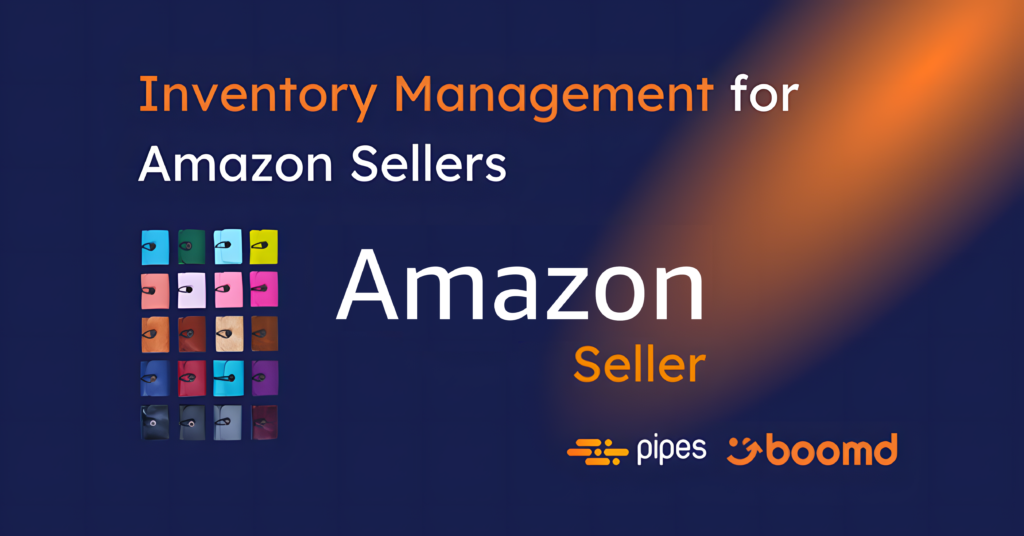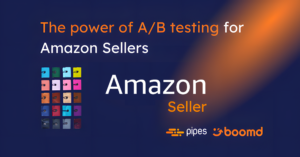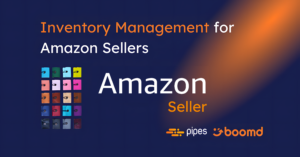Inventory management for Amazon Sellers: A comprehensive guide
Inventory management is a crucial aspect of any business, and Amazon sellers are no exception. As an Amazon seller, your inventory is your lifeline. If you don’t have products in stock, you can’t make sales, and if you run out of stock, you risk losing your best-seller ranking. In this guide, we will explore inventory management for Amazon sellers and provide tips on how to ensure that Amazon doesn’t go out of stock and what happens to the best-seller ranking of the product if it does.
The importance of inventory management for Amazon Sellers
One of the biggest challenges for Amazon sellers is managing inventory. It’s essential to keep track of inventory levels to avoid stockouts and maintain your best-seller ranking. If you don’t have products in stock, you’ll miss out on sales, and if you run out of stock, Amazon will lower your best-seller ranking.

Inventory management is also important for cash flow. Keeping excess inventory ties up capital, and it’s essential to balance inventory levels to maximise profits. By effectively managing inventory, you can avoid overstocking or understocking and ensure that you always have the right amount of products in stock.
Ensuring Amazon doesn't go out of stock
To ensure that Amazon doesn’t go out of stock, you need to maintain an accurate inventory level. This means keeping track of sales and inventory levels, and making sure that you have enough products in stock to meet demand.
There are two primary ways to help you manage inventory, Amazon Seller Central and software such as Data Virtuality Pipes, which allows you to access stock levels for all your products in all marketplaces. Once you’ve connected via Pipes, you ‘ll have access to all the data you need to be able to monitor inventory levels, track sales, and set up automated alerts to let you know when inventory levels are running low.
One of the most effective ways to ensure that Amazon doesn’t go out of stock is to use Amazon’s FBA (Fulfilment by Amazon) service. With FBA, Amazon handles storage, shipping, and customer service for your products. This means that you don’t have to worry about managing inventory levels or shipping products to customers. Instead, Amazon takes care of everything, and you can focus on growing your business.
What happens to best seller ranking if Amazon goes out of stock?
If Amazon goes out of stock, your best-seller ranking will suffer. Amazon’s algorithm considers several factors when determining best-seller ranking, including sales velocity, customer reviews, and inventory levels. When you run out of stock, your sales velocity decreases, and your best-seller ranking will drop as a result.

The impact on your best-seller ranking will depend on how long you are out of stock. If you are out of stock for a short period, your best-seller ranking will likely bounce back quickly once you restock your inventory. However, if you are out of stock for an extended period, your best-seller ranking may take a while to recover.
To avoid losing your best-seller ranking, it’s essential to keep track of inventory levels and restock as soon as possible. Using Amazon’s FBA service can help you ensure that you always have enough products in stock and avoid stockouts.
Different shipping times for different Amazon marketplaces
For FBA sellers selling on multiple Amazon marketplaces, it’s essential to factor in the time it will take to ship your products to Amazon’s warehouse.
If you’re enrolled in Pan-EU, you’ll have the opportunity to ship to fewer fulfilment centres, leaving Amazon to disperse products around regional warehouses based on their assessment of demand.
Without Pan-EU, or shipping across continents, be sure to include the shipping time in your replenishment calculation. At the time of writing, there is still some disruption in international shipping, and miscalculating when to restock can be a costly mistake.
For FBM (fulfilled by merchant) sellers, factor in manufacturing schedules or reordering timelines from your suppliers when calculating when to prepare the next shipment to Amazon, and what threshold of existing inventory per product will trigger this.
Wrapping up!
Maintaining the correct stock levels for all your products, on each Amazon marketplace, is absolutely critical in terms of maintaining sales momentum and the all important best seller ranking. Data Virtuality Pipes allows you to streamline the process of monitoring stock levels, and build your own alerts and thresholds according to your own restock rules. Sales, performance and stock data can easily be combined to give your business the full picture across all marketplaces.
Data Virtuality Pipes, in partnership with a specialist Amazon agencies like Boomd, plays a crucial role in helping sellers make informed decisions based on their data. By integrating Amazon data with Data Virtuality Pipes, sellers can monitor performance metrics, identify trends and patterns, enhance competitive analysis, and automate reporting processes!
About Boomd
A full-service Amazon agency, with a team of Amazon Vendor, Seller and data analytics experts, helping brands, manufacturers and distributors sell profitably on all Amazon marketplaces worldwide. Follow them on LinkedIn.
Title: Inventory management for Amazon Sellers
Series: Amazon Sellers
Author: Nick Turner, Co-Founder, Boomd Amazon Agency
Date: April 2023







